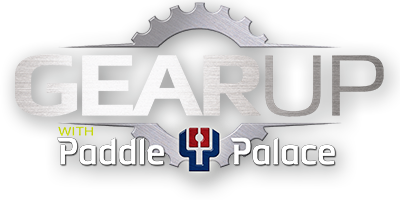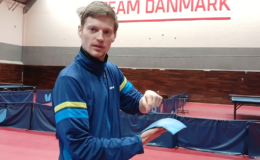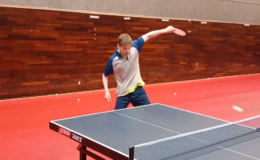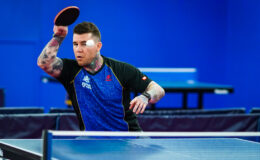By Larry Hodges, USATT Hall of Famer and Certified National Coach
The backhand flip has rapidly become the dominant receive against short serves at the world-class level. The flip (usually called a flick in Europe and Asia) is a short stroke where a player steps and attacks a short ball, forehand or backhand. What makes the backhand flip so dominant is that since the table is in the way, it is difficult to generate topspin against short balls except with the wrist, and it is easier to use wrist over the table with the backhand than the forehand. It was just a few years ago that players like China’s Ma Long showed at tournaments, backhand flipping even short serves to the forehand, considered a no-no by most coaches for many years since it put you in an extreme backhand position and so not ready to dominate the table with the forehand on the next shot. Ma Long and others showed this wasn’t true – they’d step back quickly and rip the next ball with their forehand.
This wasn’t really new historically. Viktor Barna of Hungary won five World Men’s Titles doing with a hardbat in the 1930s, often stepping around his forehand side to attack both short and long balls with his backhand. In the 1970s players like Tibor Klampar and Anton Stipancic attacked short serves over and over with wristy and topspinny backhand flips.
However, Ma Long (world #1 for all of 2010 and eight months of 2011) is the one who took it to the next level in terms of the amount and variation of spin generated, and thereby its effectiveness. A major problem with a flip is that against a heavy backspin you need to lift the ball up, and to do so you need to generate upward racket speed. How do you do this when you can’t backswing down against a short ball, because the table is in the way? By backswinging to the side, and using that swing to build up momentum to generate both topspin and sidespin on the flip. Because the stroke starts from the side and curves in toward the ball, the stroke’s path is the shape of a banana, and so it is called a banana flip.
Here’s a video featuring Ma Long’s banana flip (3:25). There’s Chinese commentary starting at 1:29, but you don’t need that to see how he does the shot. Watch how he draws the racket off to the side and then essentially loops the ball with his wrist, often doing so against short balls to the forehand. Contact is a grazing motion, usually just after the top of the bounce against backspin, more at the top of the bounce against sidespin or topspin. Also note the placement of the shot – usually at a wide angles, though aggressive ones can go at the opponent’s middle (the elbow, the transition point between forehand and backhand).
The shot is especially effective when combined with short and long pushes against backspin serves (though can also do this against no-spin and sidespin serves, even topspin serves, by aiming low or even chopping down on the ball). At the higher levels, being able to flip aggressively or drop the ball short against short serves causes havoc with an opponent as they have to hang back to deal with the flip while moving in to handle the short push. If you just flip every ball, a good player knows the ball is coming out and can wait for it and loop or hit it far more easily. Mixing in deep pushes is also effective in messing up an opponent’s timing.
A key aspect of the banana flip is that it also has sidespin, which messes with an opponent’s timing. This is especially true if the incoming ball has sidespin that they can add to, such as against a forehand pendulum serve (if both players are righties or lefties). If both are righties, the incoming sidespin matches the sidespin from a banana flip, and so it’s like looping against backspin, with the flip just adding to the topspin.
The best way to develop a banana flip is to (you guessed it) practice it. Find someone with good short serves, and have them serve over and over and you flip them. Ideally, have a bucket of balls so the server can just serve over and over, grabbing the next ball to serve without playing out the point. When the bucket is empty, pick up the balls and repeat. This is the best way to practice all types of receive, and yet few players do this, relying instead on practicing receive only in matches, which is like learning to hit drives and loops only by practicing them in matches. Not very smart. So get that bucket of balls and practice your banana flips (and other receives), and maybe someday you’ll dominate like Ma Long.



